If we were to break down the pedagogical concerns of James Gee, Jonas Linderoth, and Rowan Tulloch about videogame pedagogy into single phrases these would be: what games teach (Gee), what gamers learn (Linderoth), and what games are (Tulloch). At first it would seem that each theorist’s concern is separate from the others. But an investigation into Tulloch’s argument for gamification as an alternative pedagogy, using connecting concepts and emoji (figures 1.1 to 1.5) will demonstrate that Tulloch is connected to Gee and Linderoth, even if the latter two theorists never specifically reference gamification.
Two central claims about videogame pedagogy are shared by Gee and Tulloch. The first is how games ensure the player engages in what Tulloch terms “correct play practices.” For Tulloch point systems like high scores and health bars provide important feedback to the player about how well they are performing. The higher the number of points they accumulate, like in Pac-Man or Space Invaders, or the less health they lose, found in first-person shooters such as DOOM or Half-Life, the better they are performing. Being able to progress through a game’s discrete but connected areas (levels) is also an indicator of good play practices. An example would be getting higher up the parallel construction beams of the original Donkey Kong, clearing as many of the game’s 22 available levels as possible. The more levels you clear, the better you’re playing.
Gee invokes these same concepts using the game Thief: Deadly Shadows as his example. While playing Thief, the player must learn to use the mechanics of light and dark to their advantage so as to avoid patrols and successfully steal the treasure. Failure to learn the principles of good stealth in Thief will lead to deadly confrontations with the game’s guards. Learning to navigate the virtual environment as Thief’s main protagonist Garrett is essential if players want to achieve a “win state” and progress to the next level.
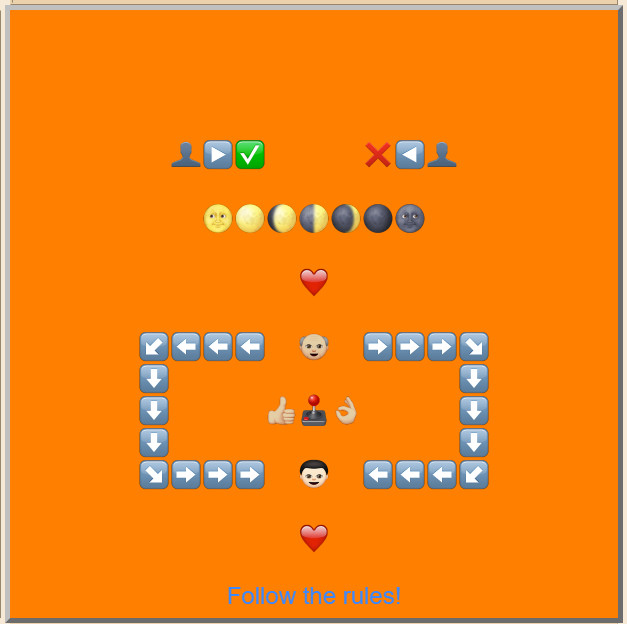
Figure 1.1: Gee and Tulloch are connected by the concept of how games teach the players how to play or follow the rules. The top row illustrates Tulloch’s concept of correct play practices. The middle row illustrates Gee’s example of Thief’s light/dark mechanics as a teaching tool. The bottom emoji illustrate the connection between Gee and Tulloch.
A further connection between Gee and Tulloch is their conception of games as an alternative pedagogy with good principles for learning. For Gee, this is because games offer newer contexts for players to learn. These include principles include embodied movement through action and goal-oriented complex systems, the ability to reconfigure and resituate meanings, multiple pathways to completing a learning goal, and so forth. Ultimately, there is an identification between the learner (in this case, game player) and their subject (the game), which when applied to another context creates an important level of identification. An educational game like Oregon Trail, which places you in the role of an American settler would be an example of this kind of identification.
Tulloch offers a similar thesis arguing that games offer an alternative to unsuccessful pedagogies that do not build in engagement or a real sense of achievement. Gamification is more than just game-based mechanics overlaid previously ungamified subjects. It represents a better way of engaging with complex subject matter and train the “profitable consumers, obedient and efficient workers, healthy citizens, or knowledgeable students” that are currently needed. One can cite the mid-2000s craze for “brain-training” games like Nintendo’s popular Brain Age series for the DS as an example. Brain Age offers its players short, fun minigames that are specifically designed to increase math and logic skills as well as improve their spatial reasoning, pattern recognition, and hand-eye coordination.
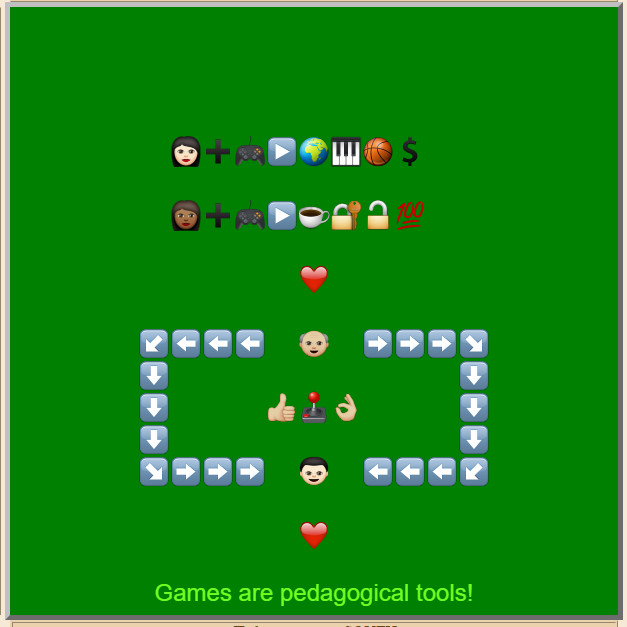
Figure 1.2: The top row illustrates Gee’s concept of the player being engaged with the subject matter they are learning through games. The middle row illustrates how Tulloch thinks games keep people engaged.
Between Tulloch and Linderoth there might seem to be even less of a connection since Linderoth is skeptical about how much gamers actually learn. Tulloch and Linderoth are connected by two significant concepts: difficulty and player performance. Although their conclusions about what these concepts mean when applied to learning diverge, they both still explore these ideas to their fullest.
Tulloch sees difficulty as an intrinsic part of game design. He argues: “The gamification of difficulty is about recognizing difficulty as part of play’s pedagogic process and understanding the intellectual history behind it.” Balancing difficulty is important to the training aspect of gamification, as the one gamifying a training exercise wants the game hit that sweet spot between being challenging and fun; the game is difficult enough to give the player a sense of satisfaction at overcoming an intense challenge but not so difficult that they give up in frustration. Sites like Code Academy use gamification (specifically distributing badges and achievements) to encourage people to learn coding languages like HTML and Ruby on Rails.
For Linderoth, games superficially appear to give players the ability to learn and that although challenging, there is a satisfaction in mastery that provides a feeling of “empowerment.” However, they are not teaching as much as we assume. He writes:
“Games are…described as being something utterly complex that by its very nature is challenging. The complexity is said to gradually increase as a player progresses through a game. Thus the fact that a player can play through a game is taken as a sign of learning.”
This assumption of difficulty, Linderoth claims, is due to game environments generally being unfamiliar to the average teacher or parent. However, games tend to guide their players through difficult passages and offer many tools for shortcutting these complex systems. Level-5’s Professor Layton series give its players difficult puzzles to solve. However, each Professor Layton game also has a built-in hint system that can help a player solve these puzzle without necessarily going through the complex learning process of grasping its internal logic.
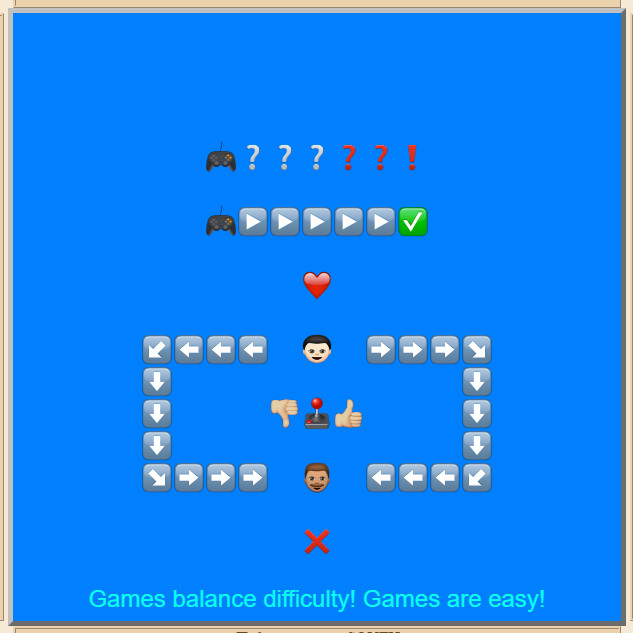
Figure 1.3: This emoji illustration is about Tulloch and Linderoth. The top row illustrates how games balance difficulty for learning. The middle row demonstrates how Linderoth think games simply guide the player to the right answer. The final emjoi illustration is about the connection and divergence of Tulloch and Linderoth.
Player performance is the key to understanding what gamers learn for both Linderoth and Tulloch.
For Tulloch, gamification is part of a deep heritage of game design that facilitates performance. Game designers understand that they have to provide tools to players so that they can navigate games and also remain consistently engaged. Facilitating player performance using the learning found in game design will produce the “profitable consumers, obedient and efficient workers, healthy citizens, and knowledgeable students for which gamification strives.” While schools have linear, conformist curves of learning, the alternative pedagogy of games offers a dynamic method of learning and good performance. An example of this kind of learning could be Portal, which teaches the player the game’s basic puzzle mechanics, but then lets the player solve each puzzle room on their own.
Linderoth sees this differently. He argues player performance is enhanced in games through the provision of special hint systems or specific game mechanics that make game environments much easier to navigate for the player. This is what undermines games as complex systems. An example is Assassin’s Creed, which allows players to enter into an “eagle vision” mode that easily highlights targets in the game or temporary power-ups like Mario Kart’s Blue Shell, which make these games less complex and easier to complete. What you can accomplish in a game is not solely due to learning, but actually due to what the game gives you to complete it.
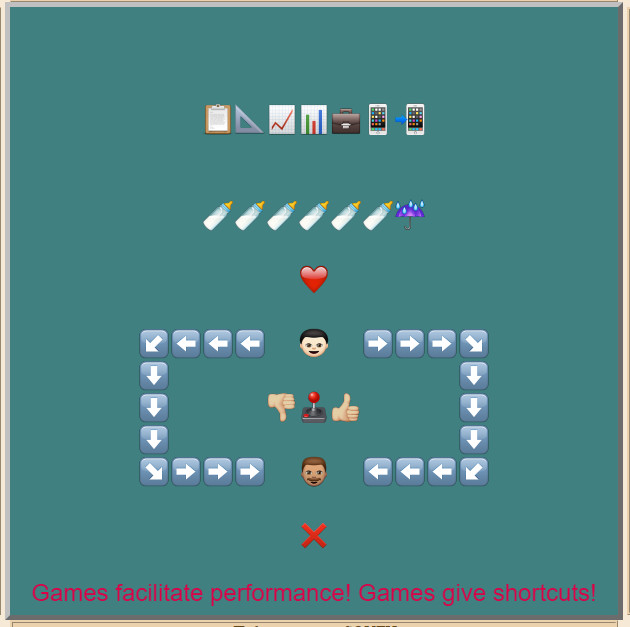
Figure 1.4: The top row shows how Tulloch believes that games have a deep pedagogic heritage that supports performance. The middle row is Linderoth’s concept of how games provide shortcuts, raining on the parade of other gaming pedagogists.
These three theorists do not work in isolation but have views about games and learning that connect in distinct ways, especially when it comes to the pedagogy behind games. Tulloch’s conception of games as being part of an alternative pedagogical tradition is shared by Gee and significantly critiqued by Linderoth. Tulloch’s central claims about what games are (alternative pedagogy) can be linked to Gee and Linderoth even if Linderoth’s concept of what gamers learn diverges from the other two theorists.
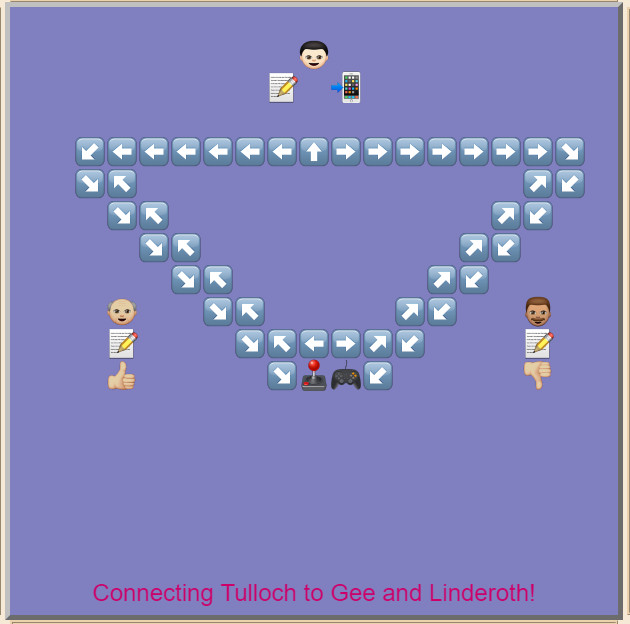
Figure 1.5: This figure illustrates the connections between Tulloch, Gee and Linderoth, with Gee agreeing with Tulloch’s concept of gaming pedagogy and Linderoth disagreeing with Tulloch but still connected to him (and Gee).
All illustrations made using anna anthropy‘s Emotica Online.







